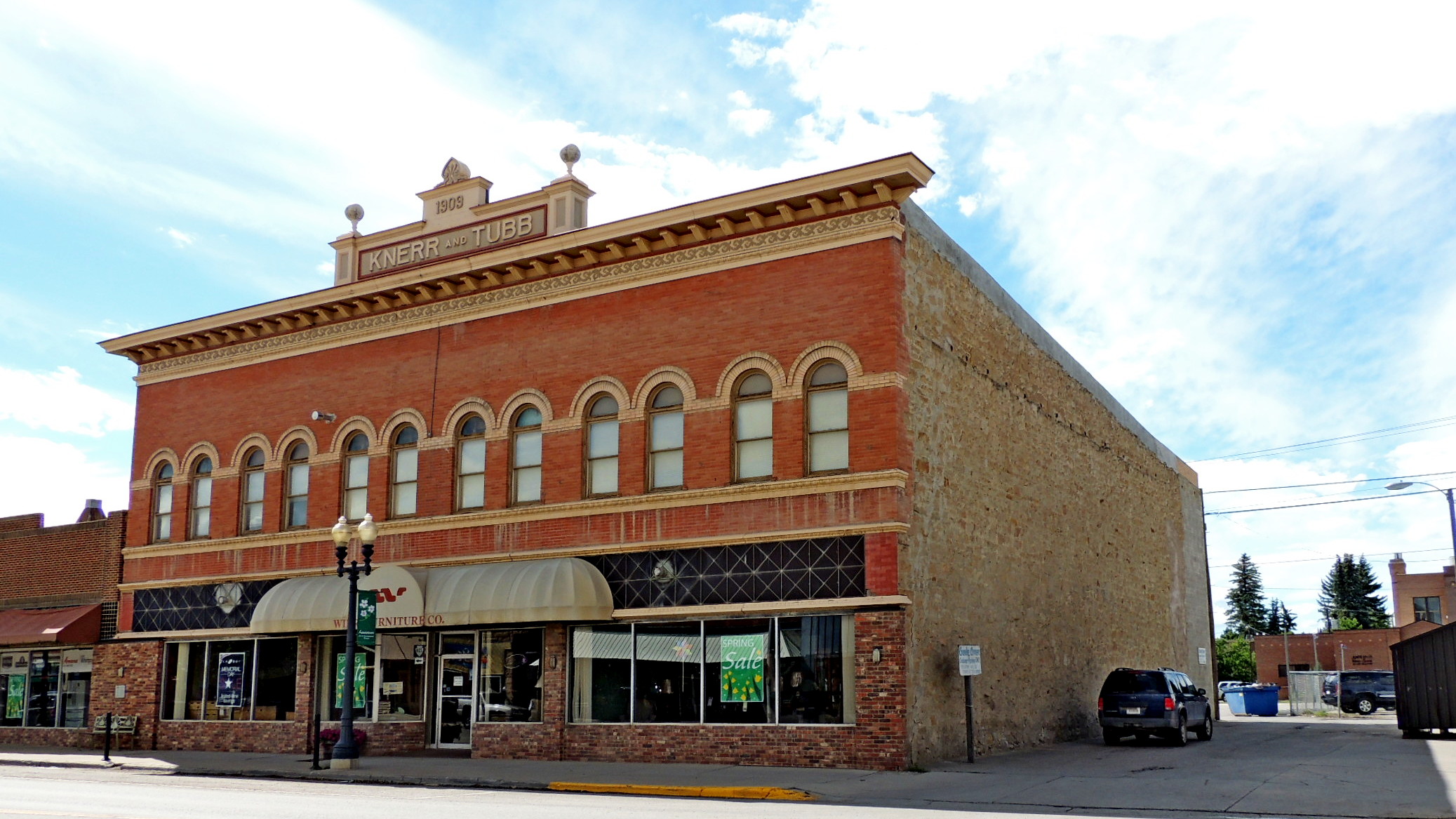|
 Knerr-Tubb Block/Armory Hall - Lewistown, MT Posted by:  T0SHEA T0SHEA
N 47° 03.986 W 109° 25.472
12T E 619626 N 5213751
Constructed in 1909-1910, the Knerr-Tubb Block/Armory Hall became one of the more notable structures in the downtown area, and one of the most used social venues.
Waymark Code: WMXRG6
Location: Montana, United States
Date Posted: 02/19/2018
Views: 0
With a dance hall, known as the Armory Hall, upstairs and a pool hall downstairs, this was, for many years, a well patronized building. Primarily commercial/retail space in the ground floor, one of the first tenants to move in was Charles Hay Harness and saddlery Shop. Charles H. Hay, the proprietor, was the inventor of the Hay Bridle, an improved bridle intended for work horses with several new and innovative features. Original owners of the building were brothers Levi and Christian Knerr & Thomas J. Tubb.
The impending construction of this two story brick commercial block was announced in early April of 1909, with construction anticipated to begin shortly. At that time it was expected that native sandstone would be the construction material of choice. However, possibly due to economics, the resultant building was predominantly brick, with contrasting lighter brick trim and a fair amount of terra cotta embellishment. As can be seen in the photos and from the detailed description below, it is a handsome building, one that local architects Wasmansdorff & Eastman could well be proud of.
KNERR-TUBB BLOCK/ARMORY HALL
Rubble stone construction with brick veneer became Main Street’s preferred design after 1909. The elegant façade of this business block is an early example of the newer style, constructed before 1911 when locally produced bricks became available. Ground-floor businesses offered food and libation at the Montana Buffet or pool and billiards next door at Spring and Eldred’s. Upstairs, dance enthusiasts “tripped the light fantastic” at charity and dress balls, weekly dances, and dance classes. In 1914, Professor Oswald of Seattle taught the latest steps like the Hesitation Waltz and the tango. The exaggerated height, arched windows, and decorative sheet metal cornice of the upper floor appear today as they did in 1909.
From the NRHP plaque at the building
Describe the area and history:
Another turn of the century historic district, there are lots of interesting old buildings here, some, like this one, with some appealing eye candy.

|
Visit Instructions:
Please describe your visit- The good, the bad & the ugly. :)
Recent Visits/Logs:
| There are no logs for this waymark yet. |
|
|
|
|